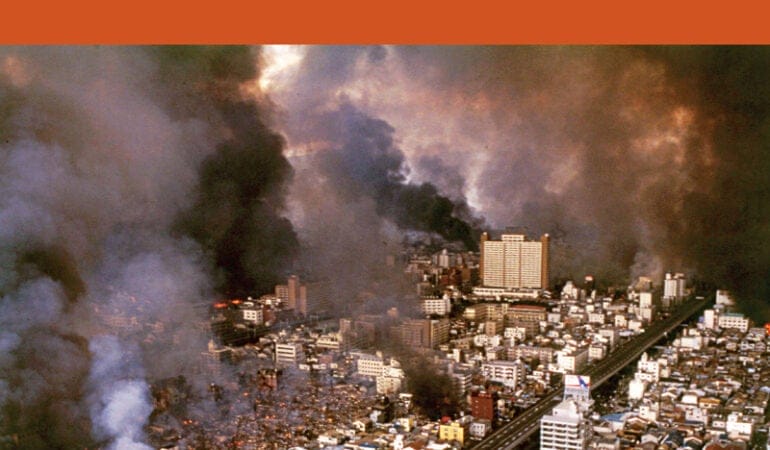
New Lincoln Institute Book
After Great Disasters: An In-Depth Analysis of How Six Countries Managed Community Recovery
By Laurie A. Johnson and Robert B. Olshansky
In the face of earthquakes, tsunamis, hurricanes, and the extreme weather impacts of climate change, communities need to plan ahead for their disaster recovery to ensure that they rebound and emerge stronger than before, according to a groundbreaking new book of in-depth case studies from six countries across three continents. After Great Disasters: An In-Depth Analysis of How Six Countries Managed Community Recovery, by Laurie A. Johnson and Robert B. Olshansky, synthesizes the authors’ 25 years of collaborative experience as recovery planners onsite of major disasters ranging from the 1995 earthquake in Kobe to Hurricane Sandy in 2012. They recommend best practices for urban officials and policy makers based on firsthand research on the roles of various levels of government in successful disaster recovery and rebuilding in the United States, Japan, China, New Zealand, Indonesia, India, and several other countries around the world. The authors collected hundreds of documents and interviewed government officials, academic researchers, representatives of international aid organizations, community leaders, and disaster survivors, with the aim of finding common lessons in these disparate environments and facilitating the recovery of communities struck by future disasters.
The book expands on the research presented in the 2016 Policy Focus Report After Great Disasters: How Six Countries Managed Community Recovery, also by Johnson and Olshansky, published by the Lincoln Institute. This longer publication shows how metropolitan regions can rebuild for greater resilience during the reconstruction process after earthquakes, tsunamis, hurricanes, or terrorist attacks. “The level of detail in the book is invaluable for disaster recovery workers on the ground, compared to the concise recommendations in the earlier report, geared to readers at the executive level,” said Olshansky, head of the Department of Urban and Regional Planning at the University of Illinois at Urbana-Champaign. Johnson is an urban planning researcher and consultant, and chairs the U.S. National Advisory Committee for Earthquake Hazards Reduction.
As Johnson notes, “Disasters can change the fortunes of a city or region forever.” Chicago and San Francisco became more successful after fire and earthquake ravaged them, respectively. Tokyo successfully survived devastating fires caused by earthquake and war. But the city center of Managua, Nicaragua, never recovered from a 1972 earthquake, and Galveston, Texas, lost its status as a booming metropolis after its destruction by a great hurricane in 1900.
The management of recovery matters because disasters extend over time. They disrupt lives and businesses as people await assistance, infrastructure repair, and the return of their neighbors. Physical recovery from disasters takes many years, and the psychological scars can last for decades. Many people survive the initial disaster but then suffer from the recovery as the economy stagnates, social networks weaken, and healthcare and support services decline. The process of recovery is a major aspect of a disaster, and its management can affect both the intensity and the duration of citizens’ disaster experiences. Post-disaster reconstruction offers a variety of opportunities to fix longstanding problems by improving construction and design standards and quality, renewing infrastructure, creating new land use arrangements, avoiding hazardous locations, reinventing economies, improving governance, and raising community awareness and preparedness.
In the past 40 years, a number of serious international disasters have required large-scale, sustained intervention by multiple levels of government and nongovernmental organizations. Their activities and actions have increased knowledge of long-term post-disaster reconstruction. We now have enough examples to develop effective models for the process of rebuilding human settlements after disasters.
About the Authors
Laurie A. Johnson, Ph.D., AICP, is an internationally recognized urban planner specializing in disaster recovery and catastrophe risk management. In 2006, she was a lead author of the recovery plan for the city of New Orleans after Hurricane Katrina; she then coauthored the book Clear as Mud: Planning for the Rebuilding of New Orleans with Robert Olshansky. She is also a visiting project scientist at the Pacific Earthquake Engineering Center at the University of California, Berkeley. Her consultancy is based in San Rafael, California.
Robert B. Olshansky, Ph.D., FAICP, is professor and head of the Department of Urban and Regional Planning, University of Illinois at Urbana–Champaign. He coauthored Clear as Mud: Planning for the Rebuilding of New Orleans with Laurie Johnson, as well as the report Opportunity in Chaos: Rebuilding after the 1994 Northridge and 1995 Kobe Earthquakes with Laurie Johnson and Ken Topping, and he edited the four-volume Urban Planning After Disasters (Routledge). He and collaborators, with support from the National Science Foundation and the University of Illinois, have also researched and published on disaster recovery in China, India, Indonesia, Haiti, and Japan.
Contents
1 Introduction: Evolving Approaches to Managing Recovery from Large-Scale Disasters
2 China: Top-Down, Fast-Paced Reconstruction
3 New Zealand: Centralizing Governance and Transforming Cityscapes
4 Japan: National Land Use Regulations Drive Recovery
5 India: State-Managed Recovery with NGO Involvement
6 Indonesia: Centrally Managed, Community-Driven Approaches to Reconstruction
7 United States: An Evolving Recovery Policy Centralized at Federal and State Levels
8 Conclusions and Recommendations
